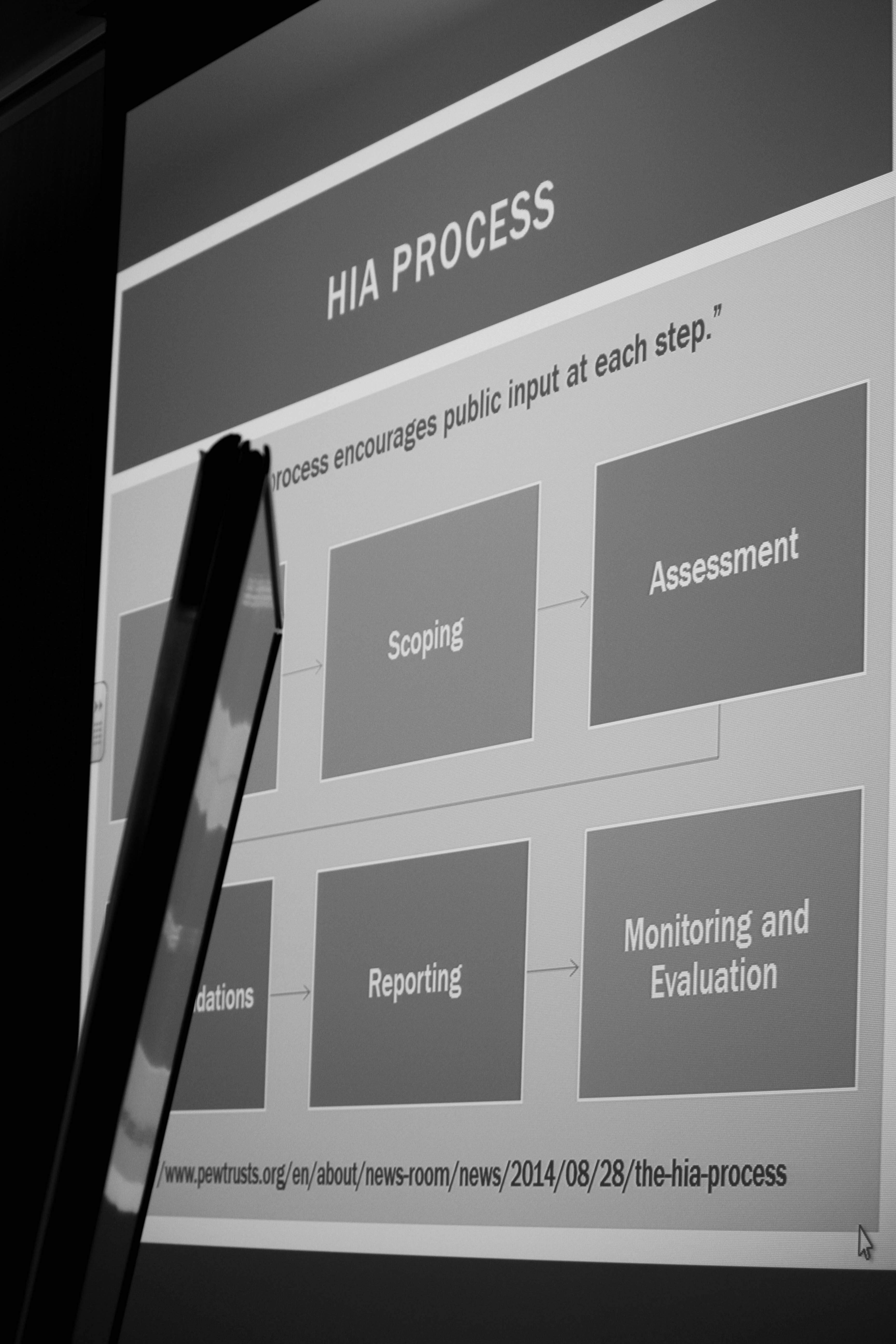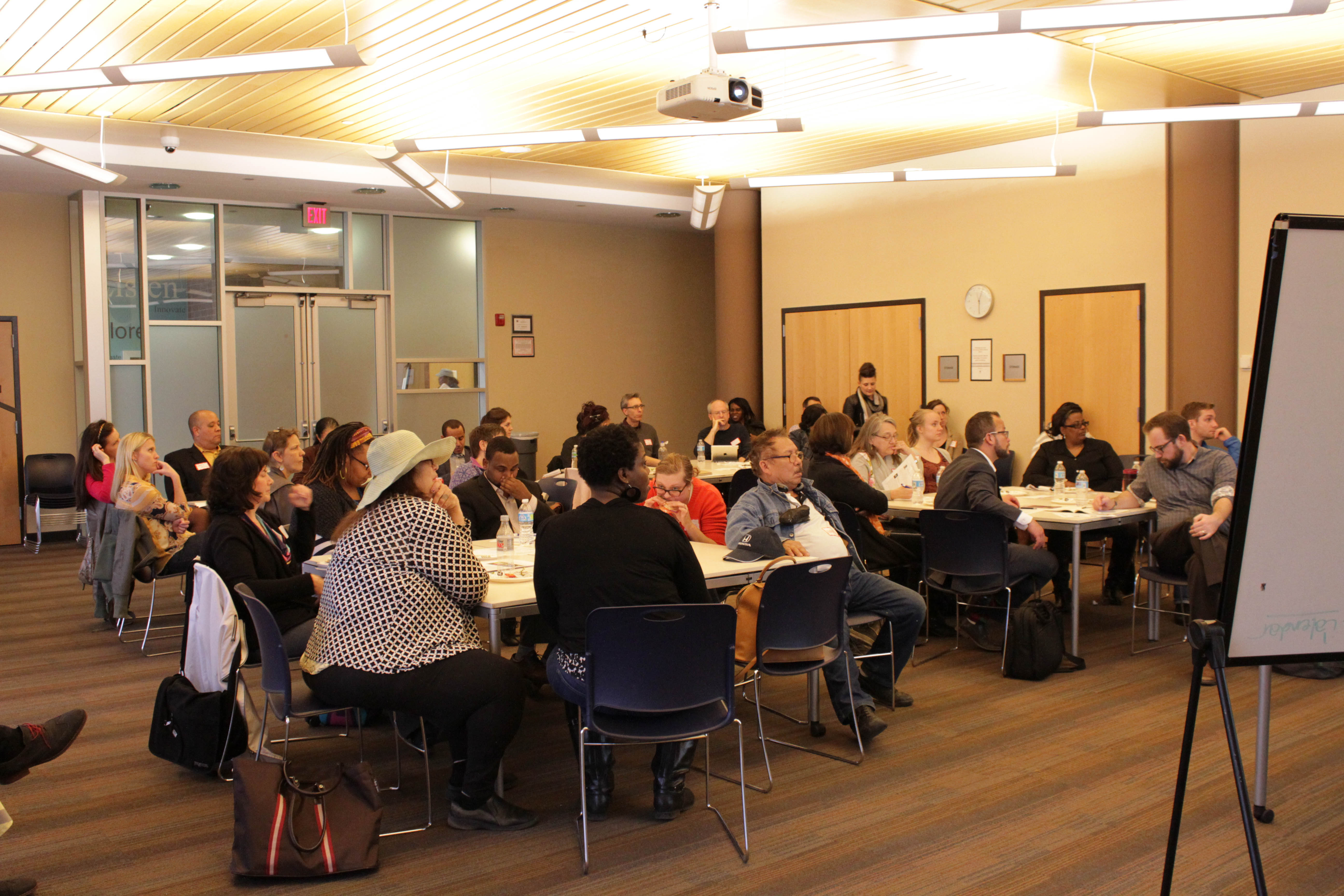 The National Research Council defines a Health Impact Assessment (HIA) as “a systematic process that uses an array of data sources and analytic methods, and considers input from stakeholders to determine the potential effects of a proposed policy, plan, program, or project on the health of a population and the distribution of those effects within the population. HIA provides recommendations on monitoring and managing those effects.”
The National Research Council defines a Health Impact Assessment (HIA) as “a systematic process that uses an array of data sources and analytic methods, and considers input from stakeholders to determine the potential effects of a proposed policy, plan, program, or project on the health of a population and the distribution of those effects within the population. HIA provides recommendations on monitoring and managing those effects.”
So the question remains: is this new research method really going to benefit the communities that they are intended to benefit? And how is this process different than the myriad research already done to low-wealth communities and communities of color that has not yet systemically addressed the health disparities in Minnesota?
The Boards and Commissions Leadership Institute (BCLI) wrapped up our 2014-15 BCLI Issue Series by exploring these questions together with 40 community members and four guest speakers. Speakers shared about the process of HIAs, how they believe they can be used as tools to ensure equitable outcomes both in community and at the policy level, and discussed the process and outcomes of the various HIAs in which they are involved.
Check out the photo gallery here, and listen to the audio of the speakers below.

Larry Hiscock, Program Officer of Transitway Engagement at Nexus Community Partners, began the evening with an introduction to health impact assessments – specifically as a means to address historical and institutionalized racism by assessing health impacts and outcomes in partnership with communities most impacted by community development projects. This HIA process has the potential to ensure that members of the community are also members of the decision-making tables where the research is crafted, collected, analyzed and acted upon. Check out Hiscock’s PowerPoint here for more information, and listen to his audio below.
The panelists then began their exploration and sharing of the three HIA projects they are involved in – including Hennepin County’s Bottineau Transitway HIA, the Council on Crime and Justice’s Minnesota Expungement Policy Expansion HIA, and the Minnesota Department of Health’s Green Zones HIA. Click the links below to listen to each panelist.
Karen Nikolai, Manager of Healthy Community Planning for Hennepin County, shared her work with the Bottineau Transitway Engagement HIA, highlighting the importance of community engagement in the Bottineau Light Rail Transit (LRT) development that will expand LRT through communities with high rates of poverty and members who are highly transit-dependent. By engaging the communities’ stakeholders through the HIA process, the station area planning for the LRT is being shaped by the needs and vision of the community – which offers real potential to improve health for communities living near the transit stations. Check out Nikolai’s audio below:
Ebony Ruhland, Research Partner with the Council on Crime and Justice (CCJ), spoke to the CCJ’s Minnesota Expungement Policy Expansion HIA – an HIA designed to examine the health impacts caused by the criminal justice system. In particular, this HIA will determine whether a legislative proposal to allow certain criminal records for first-time offenders in juvenile delinquency, theft, and nonviolent drug cases to be expunged, will lead to healthier outcomes for communities disproportionately charged with these offenses. Although in the beginning phases of an HIA process, Ruhland highlighted the uniqueness of this HIA in its plan to include both policy-makers as well as ex- and current offenders who would be impacted by this legislation. Listen to Ebony’s full audio below:
Dr. Cecilia Martinez, Director of Research Programs at the Center for Earth, Energy and Democracy (CEED), shared about the HIA process she is a part of with the Minnesota Department of Health around Green Zones in Minneapolis. This HIA is in progress to evaluate the potential impact of Green Zones as a solution in Minneapolis to be “a community-led approach to transforming communities that have been overburdened with environmental hazards and limited economic opportunities”. Check out Dr. Martinez’ audio below:
The evening concluded with Q & A between panelists and the audience, surfacing some of the reservations that the community had as being a source of yet more research, as well as wanting to see the results of HIAs lead to policy shifts that will create greater health equity in the region. Click below to listen to the Q & A portion of the event.
The audience did not speak into a microphone, but the questions asked during the Q&A are summarized underneath the audio link below. Skip ahead to the time in front of the question to hear the response for each question.
- (:49) How can HIAs break down silos? We don’t need more data! How are HIAs useful?
- (9:28) How do you see policy makers using HIAs to inform policy and moving racial equity forward?
- (14:02) Why do we still have the same policies in place when we have all this data collected that shows such racial disparities?
- (20:45) What would be your happy ending – best outcome because of doing these HIAs?
- (23:22) Can you aggregate the data to push for policy changes? How do you attribute economic impacts to the HIA?
- (28:55) How do we build benchmarks into the data and the grassroots efforts that help circumvent regression?
- (32:27) What specific data or info do we need to collect to make policy change around environmental justice (pollution, etc)?